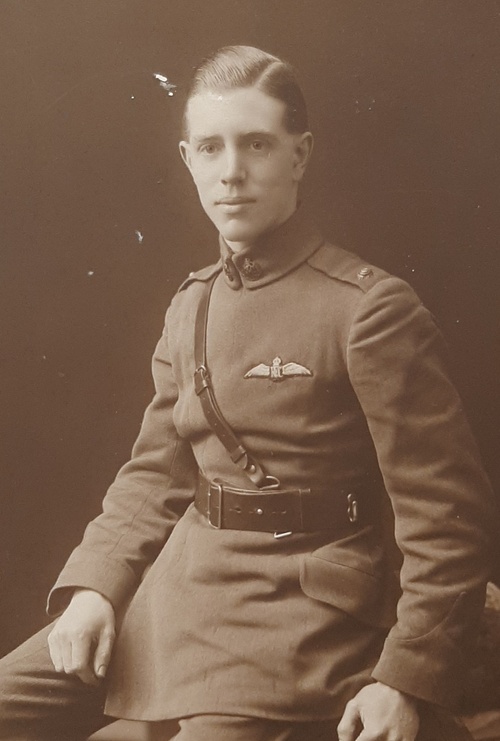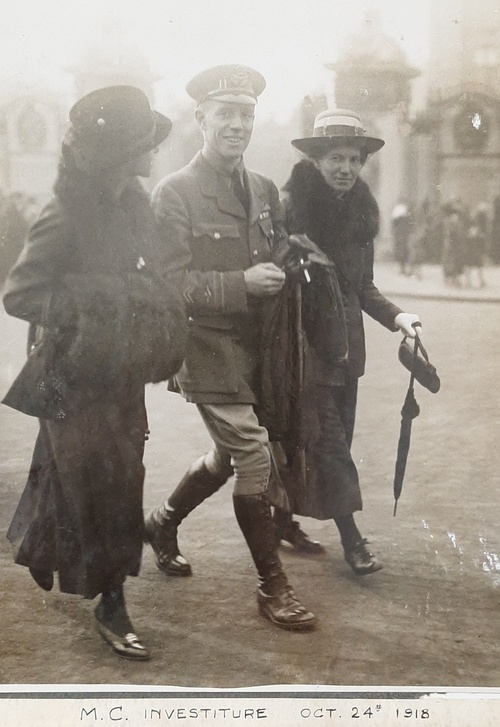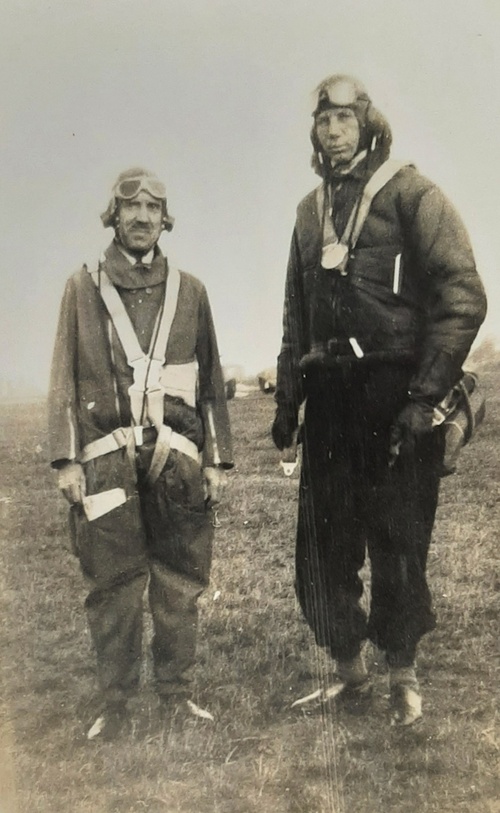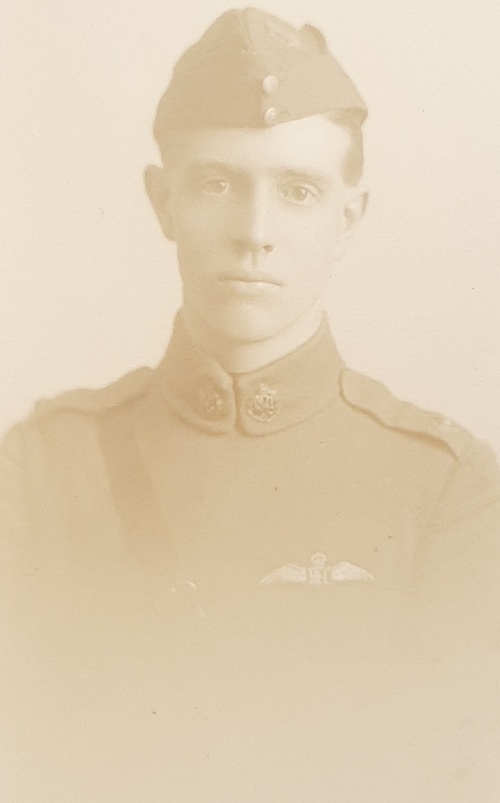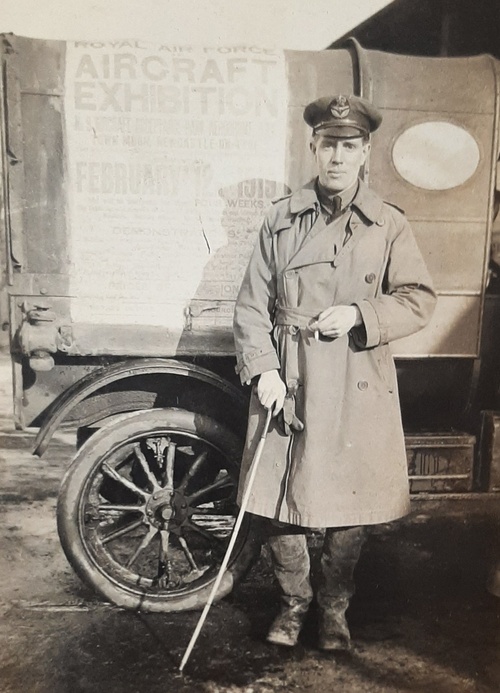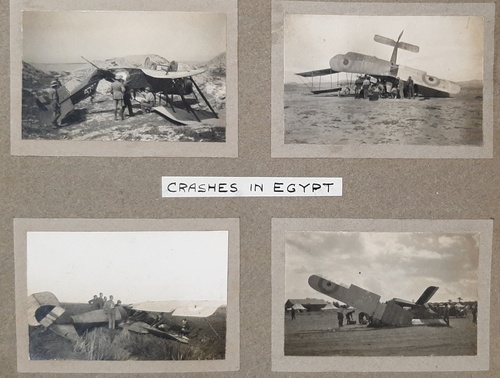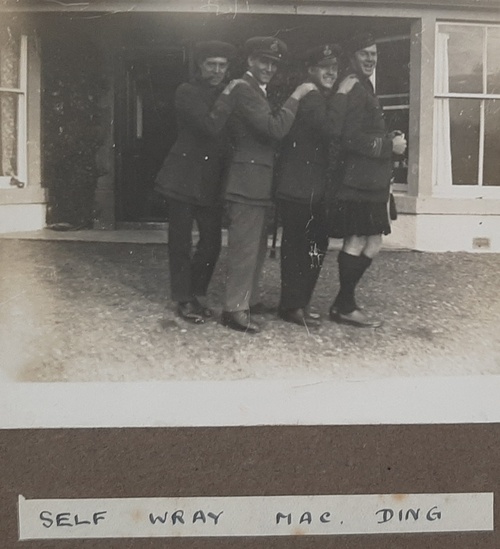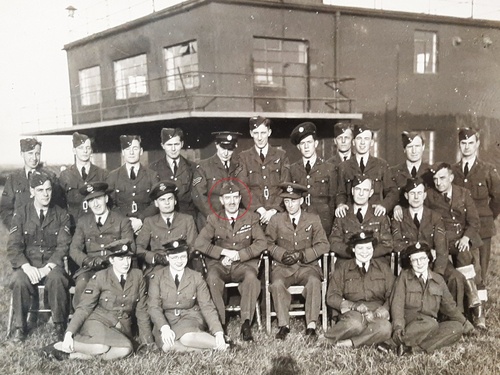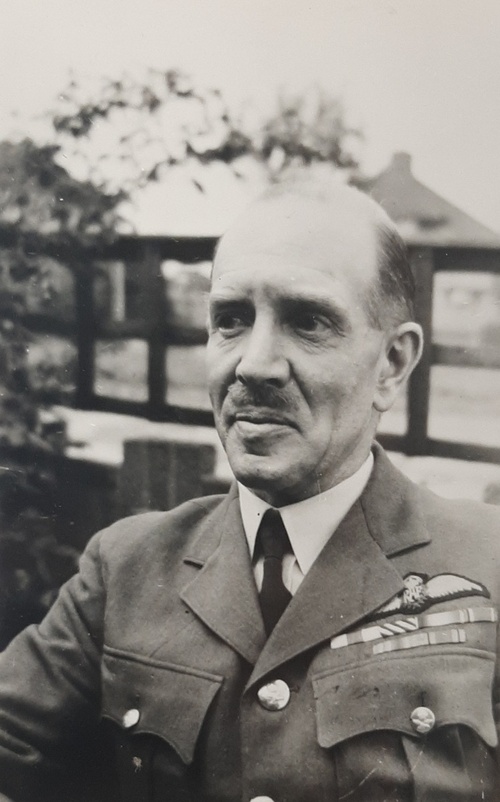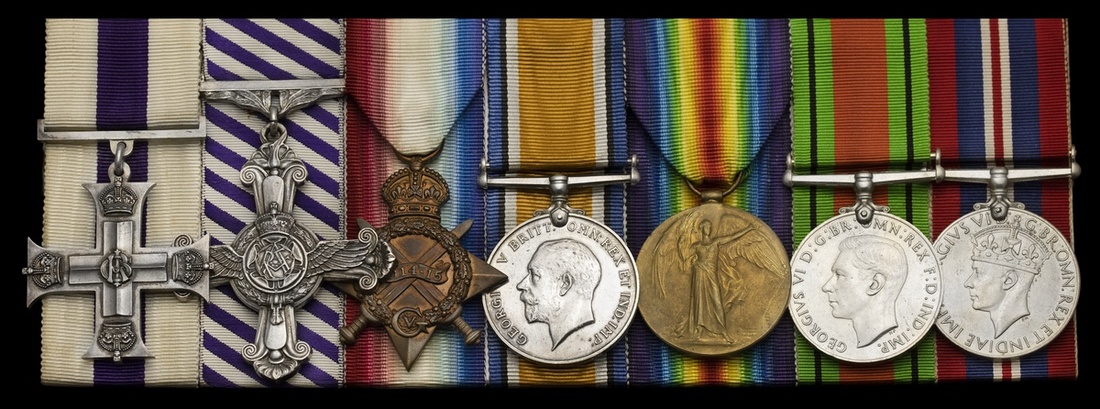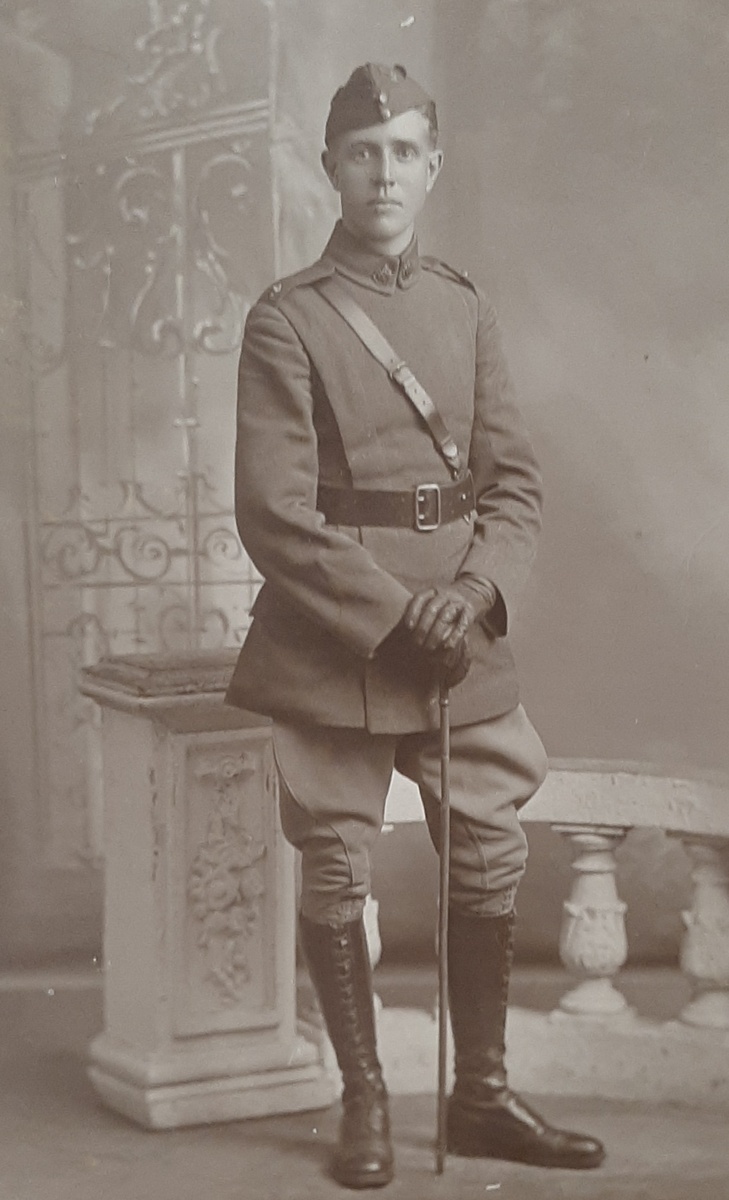Auction: 24003 - Orders, Decorations and Medals
Lot: 211
'Throughout the summer combats of 1918, the same names recur like a ticking clock, 74 Squadron had Mannock, 64- Tempest, 85- Major Billy Bishop; and for Number One -Clayson. There is no doubt that Clayson, like Fullard, would have ranked with the heist scorers had time and circumstance not been against him. Of the very top pilots of the Great War, only Bishop was a teamwork man. Mannock and Ball fought alone by choice and Richthofen got most of his eighty kills against defenceless two seaters. Both of No 1 Squadron's outstanding fighter pilots, however, were exceptional team leaders and contributed far more to their cause by so being - by bringing the guns of their patrols to bear on the enemy, often at the expense of a fat personal score.'
Twice Vertical - The History of No.1 (Fighter) Squadron, RAF by Michael Shaw, gives glowing praise to the remarkable fighter ace Captain 'Pip' Clayson
The superb Great War 'Flying Ace's 1918' M.C. 'Patrol Leader's 1918' D.F.C. group of seven awarded to Captain P. J. Clayson, Royal Air Force, late R.N.A.S., who's remarkable 29 kills earn him a place as the 27th highest scoring fighter ace in the British Empire during the Great War - the second highest score in his Squadron - and even managing the rare feat of ten kills in a single month
Military Cross, G.V.R., the reverse engraved 'awarded to Lieut. P. J. Clayson. May 9th 1918'; Distinguished Flying Cross, G.V.R. the reverse engraved 'awarded to Captain P. J. Clayson. June 18th 1918'; 1914-15 Star (F.2216. P. J. Clayson. A.M.1, R.N.A.S.); British War and Victory Medals (Capt. P. J. Clayson. R.A.F.); Defence and War Medals, sold together with the recipient's four original Flying Log Books, good very fine (7)
M.C. London Gazette 22 June 1918:
'For conspicuous gallantry and devotion to duty. When on low-flying offensive patrol, he engaged an enemy scout and shot it down, with the result it crashed to earth. He has brought down several hostile machines, one of which was forced to land in our lines, and has engaged massed enemy troops and transport from very low altitudes with machine-gun fire, inflicting heavy casualties. He has displayed the most marked determination, courage and skill.'
The original Recommendation, dated 5 April 1918 states;
'Temp. 2nd Lieutenant Percy Jack Clayson, Pilot, 1 Squadron R.F.C. who was posted to this Squadron on 31 October 1917. On the recent low flying operations, this Officer carried out his work with great skill and good leadership. He has been on six bombing patrols since 26 March 1918 and has done excellent work throughout.
On 26 March 1918 he, with others on patrol, dropped bombs in Bapaume on railway N.E. of the town from 200 feet, causing general panic. On his second patrol he dropped bombs on enemy cavalry and limber wagons from 300 feet, observing two direct hits, causing a stampede among the horses. He also fired 250 rounds from machine guns at this target and entirely dispersed the enemy.
On 27 March 1918 Lieut. Clayson went out on three bombing patrols. On the first he dropped 4 bombs from a very low altitude in huts behind Fampoux, obtaining direct hits and he fired 400 rounds into trenches at the same place. Later he attacked an E.A. Scout between Achiet-le-Petit and Ablainzevelle and shot it down Out of Control. (It was afterwards seen crashed on the ground near the latter place by Lieuts. Rigby and Clayson) He then fired 350 rounds into trenches at Farbus. On the second patrol he dropped 4 bombs and fired 100 rounds into enemy trenches. Later he dropped 4 bombs from a low altitude into hutments at Beaucourt and fired 200 rounds in trenches E. of Fampoux. On 30 March 1918 he carried out a bombing patrol and dropped bombs N.E. of Monchy. The following may be of interest :-
On 16 February 1918 2/Lieut. Clayson engaged an Albatros Scout and forced it to land in our lines near BAILLEUL.
On 28 February 1918 he shot down an Albatros Scout Out of Control. (Confirmed by Lieut. Fitzmaurice and Lieut. McKeague of this Squadron).
On 11 March 1918 he with two other Officers sent down an enemy balloon in a deflated condition.
On 11 March 1918 he shot down an E.A. 2-seater Out of Control. (A.A. 2nd.Army reported seeing this machine going down Out of Control).
2/Lieut. Clayson's work has always been excellent. He is a very keen Officer and I beg to recommend him for immediate award.'
D.F.C. London Gazette 3 August 1918:
'A patrol leader of great skill, and a skilful marksman, whose personal fighting successes have proved of much value to his squadron. Captain Clayson's patrol frequently encountered enemy formations in superior numbers, but invariably succeeded in inflicting serious losses.'
The original Recommendation states:
'Temp. Captain Percy Jack Clayson M.C., 1 Squadron R.A.F.
On the 20 April 1918 while on Offensive Patrol, Captains Clayson and Clark engaged six Pfalz Scouts, one of which was crashed between Kemmel and Wytschaete.
On the 14 May 1918 when leading an Offensive Patrol over Dickebush Capt. Clayson dived on three Albatros Scouts, one of which he shot down S. of Dickebush Pond. On the 27 May 1918 Capt. Clayson's patrol fought seventeen Albatros Scouts; the one engaged by Capt. Clayson fell in flames W. of Armentieres.
On the 28 May 1918 when on a similar duty, he destroyed a D.F.W. two-seater, which fell between Meteren and Vieux Berquin.
On the 29 May 1918 in company with Lieut. Scroggs, Capt. Clayson shot down a Halberstadt two-seater N.W. of Vieux Berquin. Later in the same Patrol he shot down an Albatros Scout in "No Man's Land" near Neuf Berquin.
On the 2 June 1918 he led his Patrol against four Albatros Scouts and destroyed one N. of the Bois de Pagaut. On the 6 June 1918 his Patrol fought with thirteen Pfalz Scouts: he shot down one which crashed in Ploegsteert Wood. He then engaged another which fell in flames about the same place.
Capt. Clayson combines skilful pilotage with excellent marksmanship; his remarkable successes are of the greatest value to his Squadron.'
Percy Jack 'Pip' Clayson was born at Deptford on 7 June 1896, the son of John and Georgiana Clayson of 77 Kitto Road, Deptford. Studying at the Royal Masonic School for Boys, Bushey he joined the Royal Naval Air Service on 24 November 1914 as Air Mechanic Class II. He was to serve with them through much of the war, with his papers noting 'Service in Land Operations' during that period, entering the War in France on 23 December 1914.
First Steps - Already an Ace
They further note that his commander 'approves discharge of this rating from the R.N.A.S. in order that he may undergo a course of training with the R.F.C. officer cadet wing'. Commissioned 2nd Lieutenant on 19 July 1917, his first training flight was on 21 July and he earned his wings on 28 September 1917, with his aero certificate (numbered 5617) signed two days later.
Joining No. 1 Fighter Squadron in France on 31 October 1917, driving Nieuport 4s although these were replaced by the S.E.5as in January 1918. The next month Clayson won his first victory with his Flying Log Book stating: 'Bagged an Albatross meters 100+' on 16 February, the action is covered in British Single-seater Fighter Squadrons on the Western Front in World War I:
'On patrol over Mont Rouge at 11.30am, Lt Percy Clayson saw an Albatros scout, pointed out by Archie, diving on a ground target at Bailleul. Clayson got behind the enemy scout and shot it down to crash in a ploughed field, the enemy pilot, Ltn Bastgen of Jasta 20, getting out and walking around his crashed machine.'
He flew a demonstration for the Air Staff on 24 February only to suffer from an oil pressure problem, which saw the aircraft crash upon landing. Despite severe damage Clayson himself survived, and was flying again with four days, forcing down another Albatros, out of control over Zonnebeke.
Clayson appeared the following month in the citation for a 'mention' while attacking a balloon alongside the mentioned Lieutenant Hamilton on 11 March. Two days later he shared a Pfalz scout along with the rest of a flight of No. 1 Squadron Weiltje, apparently shared by nine pilots. His logbook notes further combat over the next few weeks, dogfights, victories by wing mates and diving attacks upon enemy trenches, however he himself did not score a kill again until 27 March.
On that day Clayson bombed an enemy aerodrome and targeted ground troops however at one point he found himself flying over Achiet-le-Grand and spotted a formation of five enemy scouts. Coming up behind that formation he latched onto the last machine in the formation and opened fire causing it to flip over its right wing, crashing into Ablainzeville.
Again forced into a crash landing on 1 April Clayton was lucky to come out alive a second time, crashing into a bank after his engine cut out on a bombing patrol. He then had a two week break from flying, beginning again on 19 April soon starting to kill again with a Pfalz over Pacaut Wood on 21 April. He rounded out the month with another shared victory over Uffez Peisket who was forced down and wounded when several rounds punctured his fuel tank.
May 1918 - Eight in a Month
After the end of April 1918 the pace of Clayson's flying doubled, conversely that same month he stopped adding detail to his operational flights in his logbook. A shared kill on 2 May started the month well however Clayson was to suffer a setback on 8 May when his machine was shot up during a dogfight on 8 May, the same day he was advanced Captain and given command of 'C' Flight.
'Clark's place in charge of C Flight was taken by P J Clayson, who was promoted to Captain. Six days later in a twelve-man patrol he attacked an Albatros scout pursuing it down through the clouds. On emerging from the cloud he saw another, which he also attacked. Opening fire from long range he closed to 150 yards. After 110 rounds the right hand wings folded back and the EA began to spin. Smoke started coming from the fuselage, then the machine broke p and crashed near Dickebusch.'
(Number One in War and Peace, by Mike O'Connor and Norman Franks, refers)
Undertaking a major offensive patrol on 27 May Clayson shared a kill south of Bailleul at 14:00 before single-handedly destroying another over Kemmel, at 14:50 and rounding day out with an Albatros Scout at 19:40, a remarkable three kills in one day. Not one to rest on his laurels he was up again the next day at 06:35 and within half an hour had two more kills to his name.
Clayson was out again the following day, tangling with Jasta 74's Leutnant Gunther Keitsch, who had three kills to his name. Keitsch's Albatros went down over in flames Reims and he died in the wreckage, Clayson was not down over, bringing down another foe just fifteen minutes later, this last rounding out the month of May for him with an astonishing 8 kills.
July 1918 - Ten in a Month
The month began with the Battle of Matz and Clayson was scoring victory right from the off with one combat report issued that month, succinctly stating: 'During an engagement with 18 E.A. Scouts-Albatros & Pfalz. I observed the wings fall off one of the Pfalz.'. At the head of a patrol the next day he engaged an another Albatros Scout at close range and sent it down in a steep dive, seeing it crash.
That same week Clayson went into action with a large force of thirteen German scouts, taking two of them in quick succession. The first was Vizefeldwebel Heller of Jasta 40, himself a two-kill pilot followed by a second, possibly Leutnant Derlin of Jasta 20.
Still engaged at Matz 'C' Flight, bolstered by the leaderless 'B' Flight, were attacked by three Fokker triplanes on 9 June, one of which foolishly pursued them over Allied lines. An article entitled Fokker Dr 588/17 by Paul Leaman taken up the story stating:
'Pressing home its attack, one of the triplanes followed an SE across the lines and was then attacked by the remaining two British machines. It was forced to land and, in doing so, turned upon its nose. The British Flight was led by Captain P J Clayson (SE5A, C1114) who, as leader, signed the subsequent Combat Report in which the triplane was claimed as Driven Down.'
The aircraft in question was that Gefreiter Reinhold Preiss of Jasta 14, was noted as being forced to land near Dickebusch that same day. Just four days later Clayson was back in action, leading an attack against a formation of 4 Pfalz Scouts he brought one down at point blank range. Again he led a patrol against a kite balloon, itself armed with a machine gun, on 15 June which went down after only a few rounds, catching fire.
He was now only one kill behind his tally for the previous month with two weeks on June still to go, he took his next victory on 23 June near Lestrem. Four days later he was again on patrol and attacked an L.V.C., believed to have been armoured, engaging it at close range and bringing it down in flames. The two German pilots Leutnant John Frankenstein and Leutnant Gerhard Kuter were both killed in the wreckage.
Clayson scored one final kill in the month of June, taking his score to ten, when on 30 June he engaged 4 Fokker biplanes on patrol. Coming in behind one of them he fired 100 rounds into its rear at close range causing it to flip over its left wing and come to pieces just before crashing into the ground killing the pilot, Leutnant Carl Ewald.
The Final Month and Post-War Career
Clayson was not to remain in command of 'C' Flight for much longer however he still managed to add to his tally several times in July 1918, starting on 2 July with a Hannover C. The combat report makes for grim reading:
'Observed the above over Armentieres at 11 am. At 11-10 am I dived down under his tail & approached unobserved to very close range.
On opening fire E.A. was put into a steep dive very suddenly. The observer's map fell overboard, followed by the observer. He caught hold of the gun mounting & his legs fell on the top of the fuselage. E.A. went down in a left hand circle & caught fire near the ground, crashing at S.28.U.15.a.central.'
Another victory followed two days later against a Fokker biplane near Salome and his final kill was to be on 14 July with another Fokker brought down near Neuf Berquin-Estaires. Heading back to Britain Clayson was awarded his D.F.C. by the King at Buckingham Palace on 24 July and joined the Home Establishment on 3 August.
Granted a permanent commission upon the end of the war and served with No. 6 and No. 70 Squadrons. He served in Egypt from March to November 1921 before returning to Britain, later being appointed Flight Lieutenant in 1925. In this role he joined the Royal Air Force depot in Iraq for service there Flying (Wastage) Duties.
Retiring on 14 November 1929 he was re-mobilised for service with the Royal Air Force Volunteer Reserve on 20 December 1941 as Flying Officer Clayson joined the Administrative and Special Duties branch. He served in Britain in a variety of posts, being advanced back to the rank of Flight Lieutenant on 1 January 1944. He returned to the Reserve of Officers after the end of the war and remained there until relinquishing his commission on 10 February 1954.
Sold together with a comprehensive research file including census data, 28 Combat Reports, Service Records and award recommendations as well as Army Orders, Record of Services, extracts from various histories and articles along with an original archive comprising:
i)
His Aviator's Certificate, dated 30 September 1917.
ii)
His four Flying Log Books.
iii)
Two Army Orders noting the awards of gallantry decorations, both naming the recipient.
iv)
Several Squadron Orders and a handwritten document listing the recipient's kills, this not appearing in The National Archives or another publically available soruce.
v)
Three Documents of commission.
vi)
Loose photographs and a photograph Album.
Subject to 20% VAT on Buyer’s Premium. For more information please view Terms and Conditions for Buyers.
Sold for
£17,000
Starting price
£15000


